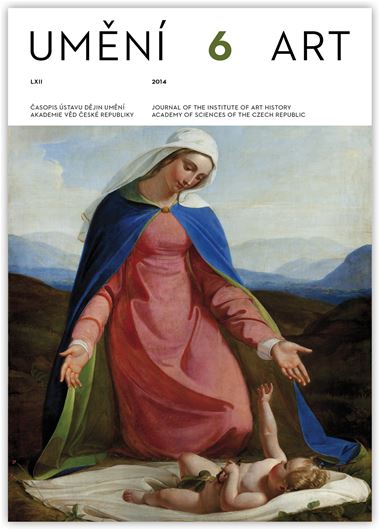Tomáš Jirsa
Živá tkáň uměleckého díla. Východiska a ozvuky biologie umění Wladimira Weidlého
This article, in the form of a foreword, discusses Wladimir Weidlé’s seminal essay from 1957 ‘Biologie de l’art’, which despite the strong response it prompted in professional circles when it was published has almost been forgotten today. Although its central premise is the empirically demonstrable analogy between forms of art and the tissue of living organisms, the essay is more than just a synthesis of aesthetic and biological thought, supreme examples of which emerged in Antiquity, the Enlightenment, and under Romanticism. It also augurs the rise of many other theoretical developments in the decades that followed its publication – for example the ‘diagonal science’ of Roger Caillois or contemporary neuro-aesthetics. After introducing the reader to the main works and professional activity of Weidlé, this article focuses on identifying the conscious sources of Weidlé’s line of argument, which can be described as a ‘metabiology of art’, and which has its roots in the work of Aristotle, the pioneer of hylomorphism. The author above all traces the foundations and implications of Weidlé’s theory, which must be considered in connection with the notion of a fundamental filiation between live nature and art forms. This is strikingly similar to Goethe’s dynamic concept of morphology, which is not so much focused on natural objects themselves as on the processes by which they constantly change. The author therefore here looks at two different offshoots of this idea: Rudolf Steiner’s application of Goethe’s theory to the study of the visual and dramatic arts, and Russian formalism, which strove for a genre theory of the literary work modelled on biology. The approaches and concepts that resonated most, however, lie in Henri Focillon’s anti-deterministic concept of the art form as a living, self-reproducing creation, in Henri Bergson’s creative principle of ‘élan vital’, and in the thought of George Kubler, who around the same time as Weidlé was discussing both biological metaphor in relation to the history of things, and temporality in the relationship between the original and a copy. In conclusion, the author sheds light on a parallel with the work of zoologist Adolf Portmann, who shared Weidlé’s focus on purposeless diversity and excess, which is intrinsic to both art and nature.
Full-text in the Digital Library of the Czech Academy of Sciences:
https://kramerius.lib.cas.cz/uuid/uuid:f9ec0e57-1518-4742-bf0a-804d099271a7
< back

